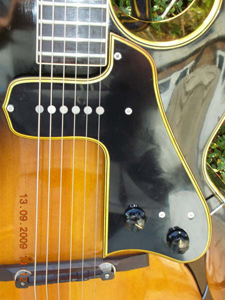Our Lollar String-Through Steel pickup is a reproduction of the old Supro® / Valco / Oahu pickup. This original pickup was used on a wide selection lap steel designs made by different makers and they were used on a few electric Spanish guitars (regular finger style guitars) like the Supro Ozark. This type of pickup was also used on the first Ry Cooder “Coodercaster”.
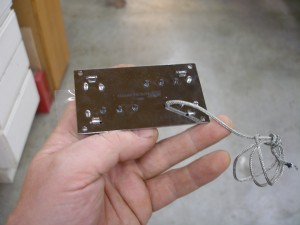
This pickup is unusually clear and detailed in tone for how much output it has. I have made the pickup the exact same size as the original with the exception of its bottom plate which I have made smaller so it will fit on a variety of guitars and the bridge is not built into the pickup like the originals. The pickup is meant to mount like any other typical guitar pickup rather than being part of the bridge and tailpiece like the originals are.
This pickup has two coils—one under the bottom three strings and one under the top three. The coils are wound so they dramatically reduce 60 cycle hum (humbucking) however the pickup still sounds like a single coil. In order for the pickup to work correctly and get good volume balance between the strings the coils are out of phase with each other—if we arranged the magnets so the coils were in phase with each other the pickup would give you bad string volume balance- some strings would be much louder than others so it’s the nature of the design that it works best with the coils out of phase with each other but because each coil senses different strings their phase doesn’t matter. HOWEVER this DOES present a problem if you install this pickup into a guitar with more than one pickup. If you combine this pickup (typically installed in the bridge position) with a neck pickup or any other pickup in any position and you use both at once in combination half of the strings will be in phase and half will be out of phase. This is only a problem if you run two pickups at once.
Installation requires a route approximately 1/8″ deep to allow room for the pole pieces and screws that hold the pickup top plate to the bottom.
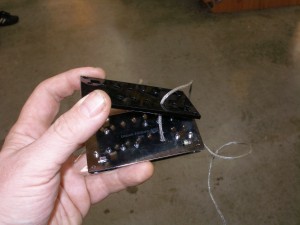
The pickup is shipped with a 1/8″ tall spacer that fits under the pickup that is routed for the pickup screws so combined with the spacer the pickup can be flush mounted on top of the guitar. A variety of spacer thicknesses are available if needed. They vary from 1-32″ to ¼” thick and can be used for mounting the pickup on a variety of guitars.
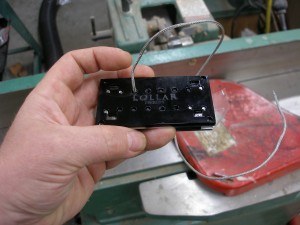
Most guitars with Gibson style bridges will need the pickup shimmed up to align with the strings properly. On Fender guitars the pickup will likely need mounted onto the surface of the pickgaurd.
The strings run under the top metal plate so they sit between the top plate and the adjustable pole pieces. Ideally your strings will sit midway between the top plate and the pole piece.
For a radiused set of strings (most guitars except lap steels) you will need to set the lowest and highest strings about midway between the top plate and the adjustable poles, your center strings will be closer to the top plate so you will need to raise the poles so the strings are equidistant between the plate and pole.
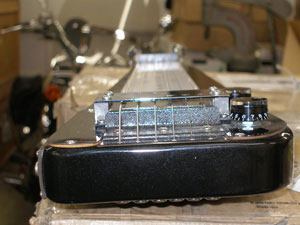
It’s more important for the strings to line up with the pole pieces than on many other pickup designs, alignment and adjustment is almost critical. The pickup is also shipped with a routing diagram.
The next blog posting “Lap Steel Modification for Lollar Supro Pickup” will describe how to modify an entry-level lap steel, and give you some tips on installing the Lollar String-Through Steel (Supro-style) pickup.
Learn about our String-Through Steel pickup.
Supro®, and the “Supro Lightning Bolt design” are registered trademarks of Zinky Electronics, LLC. Lollar Supro style pickups are a limited production, under license of Supro USA.
